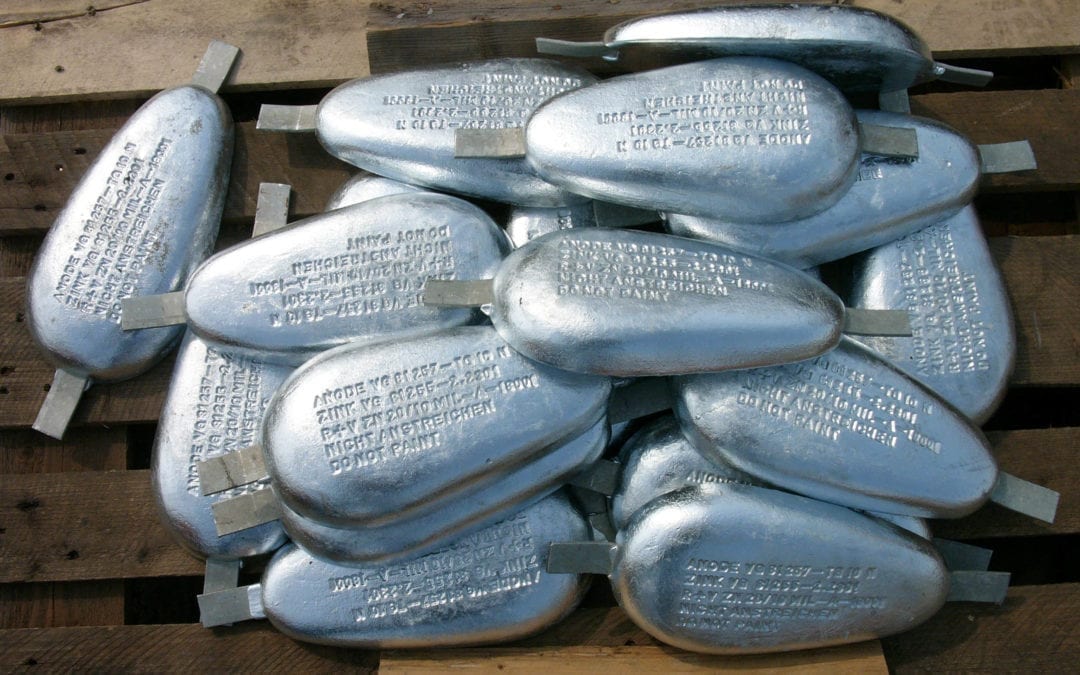The cart is empty!
Cathodic Protection: Understanding the Corrosive Reaction
Introduction to Cathodic Protection
For those working on painting tanks, pipelines, or ship hulls, it’s common to encounter cathodic protection (CP) specified alongside protective coatings to combat corrosion. Yet, for many paint technologists and applicators, CP remains a mystery.
This article serves as a foundational guide for understanding this technology, covering the basics of CP, and the nature of the corrosive reaction.
What is Cathodic Protection (CP)?
Cathodic protection (CP) is a method used to prevent metal corrosion by making the metal less corrosive in its environment.
This technique, first introduced by Humphry Davy in the 1800s, became more prominent in the early 1900s with patents for pipeline protection. The 1930s oil boom in North America highlighted its importance, as extensive corrosion led to frequent leaks in both coated and bare steel pipelines: CP, utilising zinc galvanic anodes and impressed current systems, proved effective in mitigating corrosion.
By 1938, CP was employed in marine terminal pipelines in Bahrain, and by the 1950s, it was a standard practice across Europe. Today, it is mandated for use in offshore oil and gas facilities, buried pipelines, and ship hulls requiring extended dry docking.
CP is effective for metals that are either buried, immersed, or encapsulated in a conductive medium such as steel in concrete or water-filled tanks. It is often used with protective coatings to prevent corrosion at points where the coating may be damaged, thereby extending the coating’s protective properties by preventing further corrosion, and undercutting.
The Corrosion Reaction
In the protective coatings industry, the primary concern is the protection of steel structures, so our focus will be on steel and iron.
Extracting a metal from its ore requires significant energy, which remains stored in the refined metal, making it unstable and prone to revert to its more stable state, such as iron reacting with oxygen in the air and turning into iron oxide – which we all call rust.
Corrosion is an electrochemical process – the combination of electricity with chemical processes. When a corrosion occurs, an electric current (electrons) flows from the area that is corroding – known as the anode – to an area that is not corroding – known as the cathode.
CP works by forcing additional electrons into the anode areas which stops the corrosion reaction. The extra electrons can be provided from an electrical power source or by attaching a more corrosive metal such as zinc or aluminium.
In Summary
Grasping the basics of cathodic protection and the principles of corrosion is essential if you are tasked with painting and protecting metal structures. Properly implemented CP can greatly extend the lifespan of coatings and metal structures, making it an invaluable tool in the battle against corrosion.
Our Fundamentals of Corrosion Course covers various aspects of corrosion, including:
- Basic corrosion science
- Common corrosion mechanisms; galvanic, crevice, pitting, deposition, corrosion under deposit/lagging, stress corrosion and cracking
- Methods for preventing or managing corrosion, including Inhibitors/passivation
- Introduction to cathodic protection
- Surface preparation challenges, paints and coatings
It has been designed to be suitable for engineers, paint inspectors, designers, technicians, and scientists wishing to expand their career opportunities into the corrosion field or wanting to broaden or refresh their knowledge of corrosion in general.
To learn more about this course and the next course dates, contact our admin department today.
In our next article, we examine using cathodic protection to counteract the corrosive reaction.


